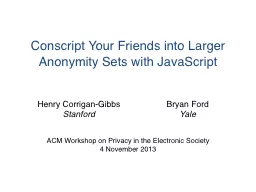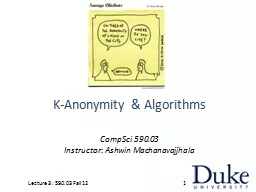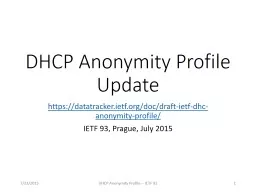PPT-Increasing Anonymity in Crowds via Dummy Jondos By: Benjamin Winninger
Author : conchita-marotz | Published Date : 2019-11-06
Increasing Anonymity in Crowds via Dummy Jondos By Benjamin Winninger Introduction and Problem Faced When it comes to crowds bigger is always better as most anonymity
Presentation Embed Code
Download Presentation
Download Presentation The PPT/PDF document "Increasing Anonymity in Crowds via Dummy..." is the property of its rightful owner. Permission is granted to download and print the materials on this website for personal, non-commercial use only, and to display it on your personal computer provided you do not modify the materials and that you retain all copyright notices contained in the materials. By downloading content from our website, you accept the terms of this agreement.
Increasing Anonymity in Crowds via Dummy Jondos By: Benjamin Winninger: Transcript
Download Rules Of Document
"Increasing Anonymity in Crowds via Dummy Jondos By: Benjamin Winninger"The content belongs to its owner. You may download and print it for personal use, without modification, and keep all copyright notices. By downloading, you agree to these terms.
Related Documents














